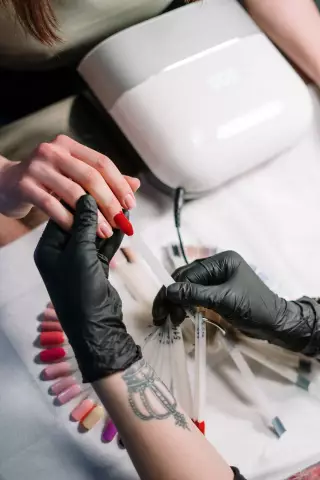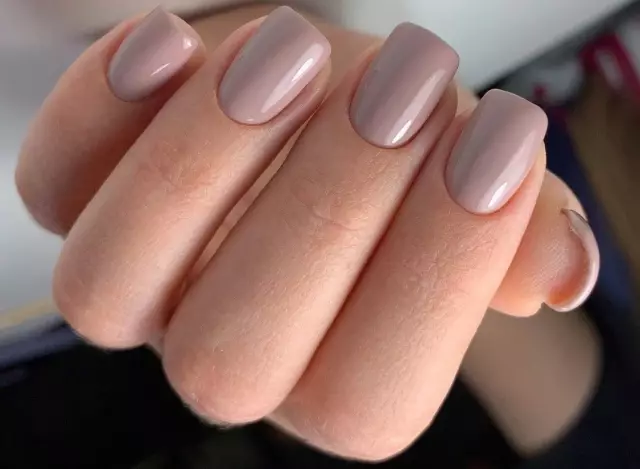- Author Rachel Wainwright [email protected].
- Public 2023-12-15 07:39.
- Last modified 2025-11-02 20:14.
European manicure

European manicure is a gentle way of caring for nails and hands. For the first time, European manicure was invented by Europeans. Distinguish between wet and dry European manicure. With wet manicure, the fingers must be soaked in a special lotion before processing the nail plates, and with dry manicure, the cuticle is removed from the dry nail plate.
Advantages and disadvantages of European manicure
European manicure is called unedged if the cuticle is not cut off, but gently pushed back with a special stick. This type of manicure is considered one of the most delicate and safest, since tweezers and scissors are not used when processing the nail plate. That is why the possibility of the introduction of fungus and pathogenic bacteria is excluded. The advantage of the European manicure is its low injury risk, bloodlessness and absolute painlessness. That is why this type of manicure is suitable even for children.
The special cuticle remover lotion contains substances that gradually dissolve the skin, starting from the top layer. Therefore, it is almost impossible to achieve the desired effect with the first application of this type of nail treatment. The first procedures soften only the upper layers of the cuticle. However, after each subsequent application of European unedged manicure, the cuticle becomes softer and thinner. The result is visible after the third or fifth procedure. Unedged manicure can be done once or twice a week (even for very sensitive skin). The manicure procedure must be repeated regularly to maintain the effect obtained.
Methodology for performing European manicure

The technique of European manicure is in many ways similar to the technique of performing a classic manicure. At the first stage of manicure, the nail plates are cleaned of the old coating or varnish. Next, the nail plates are filed to the desired length and give them the desired shape. Then a special liquid is applied to the skin to remove the cuticle with lactic and fruit acids. The tool not only removes unnecessary skin, but also prevents its further growth. The essence of European manicure is to rub in the liquid, soften the skin and then, as it were, roll it into a ball. Then hands are placed in a bath with a special concentrated agent or sea salt. After a manicure bath, the skin softens. Dead skin is removed with a special pumice stone or orange stick. The cuticle is removed with movements,directed to the side rollers from the center. At the same time, they do not touch the nail plate. Then a nourishing cream and oil are rubbed into the cuticle or nail plate, and the nails are polished with a soft buff. The final stage of this procedure can be a hand massage with oil and nourishing cream and nail polish.
Indications and contraindications for European manicure
European unedged manicure is suitable for thin skin of hands, with blood vessels located close to the surface. European unedged manicure is indicated for thin, delicate, not overgrown or dim cuticles.
With poorly groomed hands, rough skin, European manicure will not bring visible results. You cannot use this type of manicure if you are allergic to the components of the cuticle resorption liquid. You cannot do European unedged manicure with extended nails (especially acrylic), since during this procedure, products are used that contain acetone, which is unsafe for extended nails.
Found a mistake in the text? Select it and press Ctrl + Enter.






